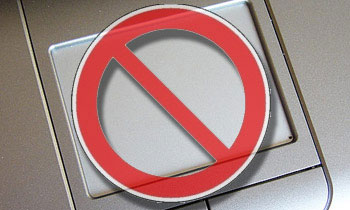Hi
there! You may have experienced having your PC, either desktop or a laptop,
intermittently hangs-up, or had re-booted itself for no apparent reason. This
can be annoying, yes, and could mean danger in losing a valuable work on the
process.
If this has happened once, then your chances of explaining the cause
are remote in the extreme. If you find it happening regularly, then it is
clearly in your interest to find and fix the problem. There are a lot of things
you could check for yourself that would save you a trip to the computer repair
shop or save you from paying a computer serviceman.
With the most modern
computers, the system comes with built in circuitry to monitor the state of the
computer. One of the checks built into your system is to test the operating
temperature. The computer may shut down if this moves outside the desirable
operating range. For your system to run at the correct operating temperature, it
is important that air circulates freely in and around the case. If you have the
computer case installed inside an enclosure, then this may be the first thing
to consider changing.
Similarly, I have seen computers covered with books,
manuals and paper documents. These again can hinder air circulation, and these
items should be removed. Take a look at the slotted vents in the sides of the
case. These slots can become blocked by an accumulation of dust. Because the
computer is usually always drawing some power, it has a constant electrostatic
charge.
 A computer is second only to a vacuum cleaner in its ability to suck in
dust and fluff. Taking the cover of the case will also show the dust build-up
inside the computer. Be careful removing dust accumulations from internal
components. This is probably best done with a soft artist’s brush or an aerosol
can of compressed air. Next, take a look at the internal cooling fans. Modern
computer usually have a cooling fan perched on top of the processor. This fan
should be clear of dust, and running freely, without obvious scraping noises, when
the computer is operating.
A computer is second only to a vacuum cleaner in its ability to suck in
dust and fluff. Taking the cover of the case will also show the dust build-up
inside the computer. Be careful removing dust accumulations from internal
components. This is probably best done with a soft artist’s brush or an aerosol
can of compressed air. Next, take a look at the internal cooling fans. Modern
computer usually have a cooling fan perched on top of the processor. This fan
should be clear of dust, and running freely, without obvious scraping noises, when
the computer is operating.
It is OK to start the computer with the case cover removed,
just be careful not to poke things into the various components. There will also
be a cooling fan inside or attached to the power supply. This again should be
free of dust and running freely. Some of the computers may also have an
additional case fan. This will be screwed over on one of the slotted case vents,
and typically be running from a cable connected to the mother board.
Not all
machines have a separate case fan, but if it is there, it is there for a
reason. Apply the same checks to this fan. If you have identified faults with
your cooling fans, this may require a trip to your local repair shop. The
repair technician may also suggest that the CPU heat sink be removed and re-placed
with fresh heat transfer compound, which is a straightforward job for an
experienced technician.
Things to check
and consider in dealing Random PC Freezing (Hangs):
1.
Memory or RAM
2.
Processor
3.
HDD
4. Mobo
4. Mobo










